For everyone
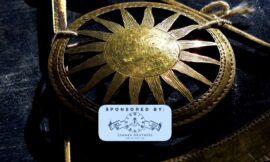
Spotlight: Jewelry
In our examination of the local history of the craft of Jewelry, we include silversmiths, watch and clock makers, engravers, and metal workers in general. The local story begins with the nationally renowned Andrew Billings, who was highly regarded, and frequently employed by, General Washington in both a personal capacity as well as an official government role. Below, from DCHS Collections, we find Billings signing as Master of the Poughkeepsie Masonic Lodge in 1790 in a certificate of membership. Note the use of the beehive as an iconic image of collaboration. Nine years later, as one of the founders of the formally incorporated Village of Poughkeepsie in 1799, Billings would choose the beehive as the Village Seal. The beehive remains in place today as the City of Poughkeepsie seal, continuing to represent collaboration and common purpose. The longtime and generous support of Zimmer Brothers Jewelers enables us to carefully, professionally archive and protect 18th century documents such as the Billings certificate, and the beautiful examples of jewelry and metal work we share here. From Zimmer Brothers Website 1880s Main Street Poughkeepsie near Garden Street shows Hallowell Jewelers sign. Founder Thomas Zimmer, Jr. started his career in the jewelry business at the age of 14 when he apprenticed as a bench jeweler for Hallowell & Co. Jewelers in Poughkeepsie, NY. Moving to New York City around the age of 18, he became shop foreman for George O. Street & Co. who manufactured wedding rings and men’s rings primarily for Tiffany & Co. Returning to Poughkeepsie in 1893 Thomas opened his own small jewelry store on Garden Street in Poughkeepsie, N.Y. where he was joined by his brother Fred, a watchmaker in 1896. In the early days Zimmer Brothers specialized in diamonds and watches and was the official watch inspector for three railroads. Thomas’s son Leonard Sr. entered the business in 1914. He was a master watchmaker graduate of the Philadelphia School of Horology. In 1948, the post war years welcomed Leonard Jr. who greatly expanded the business. Zimmer Brothers is currently owned and operated by Leonard Jr.’s son-in-law Michael Gordon who came on board in 1971 and his daughter Jocelyn Gordon Klastow joining full time in 2001, the fourth and fifth generations of the founding family DCHS Collections February 22, 1895 saw elaborate dedication ceremonies for the new Masonic Temple on Cannon Street, now known as Revel32. Among the gifts at the time was a medal noting the December 27, 1792 visit of General Washington to the local Masonic Temple at the time, which was then located in the home of Grand Master Lewis Dubois, just north of today’s Bardovan Theater. The medal was a gift of Helmus W. Barrett (1846—1932) who was born in Clinton House at 549 Main St. He was a founder and life-long Director of the First National Bank. For 17 years he was an active member of the Board of Education, giving gifts to local schools, for example, of portraits of Washington and Lincoln. Silversmiths A recent gift of Peter Van Kleeck. BELOW: To best view the article below, hover over the image so that a toolbar will appear at the top. Then click the full screen icon at the far right of the toolbar. Press “escape” to exit full view. Gallery
Posted in: For everyone
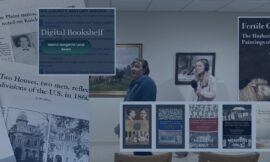
DCHS 2022 Year End Message from the Executive Director
Invest in what is important Dear members and friends of DCHS, While this seems like an obvious thing to say, we ask you to consider a greater than usual year-end contribution to the Dutchess County Historical Society that reflects our larger ambition and greater successes in recent years. By doing so, you will be ensuring that our generation as stewards of our local history is a strong link in the long chain of responsibility, and that our greatly expanded work should continue. Public Exhibition, Programs & Outreach is Growing Exponentially Several hundred people have attended the exhibition Fertile Ground: The Hudson Valley Animal Paintings of Caroline Clowes, which runs through December 30 at Locust Grove Estate. Our related online exhibition and video program archive continues to grow. The exhibition is the first program from a new, formal, ongoing relationship with the Loeb at Vassar College. Our exhibition will be discussed at a conference panel in Paris in the new year. The partner curator to Melodye Moore, DCHS Collections Chair, and myself, is Vassar art historian Caroline Culp, Ph.D. She will be in Paris in the New Year representing the exhibition, invited as a speaker as part of an academic conference at the Musee D’Orsay exhibition of the work of French animal painter Rosa Bonheur. We get close to one thousand engaged viewers of our website every month, which we have just made a signficant investment in to make it easier to navigate and find resources both within DCHS and outside of DCHS that are relevant. We gratefully accept a growing number of invitations to speak at seventh grade and high school classrooms to talk about the relevance of local history. We have been publishing a full page column every two weeks in the Northern/Southern Dutchess News / Beacon Free Press for five years which we want to bundle into an online and printed book, if we get the financial support to do so. Because we have invested in having all 12,000 pages of our DCHS Yearbooks since 1914 digitally copied, we have a great deal more flexibility in what we can offer. We launched two DCHS Yearbook Encore Editions this year, which draw from the entire span of our yearbook and bundle a single topic. The topics this year are Black history and Hudson River Sports. Your support will allow us to do more. We published a beautiful 44-page color catalog related to our exhibition of the animal paintings of Caroline Clowes. DCHS members and donors have access to all three publications and will have access to the 2022 Yearbook as a fourth new publication in the first quarter of 2023. We have delayed the launch of the 2022 Yearbook to take advantage of opportunities for significant savings in printing. The topic, “Invisible People. Untold Stories.” Is inspired by the headline and words of the late Lorraine Roberts who wrote in the 1987 DCHS Yearbook about the challenge and opportunity of untold stories. We invite you to take a look at www.dchsny.org/memberdonor with the password: olddutchess. There you will find online versions and instructions on how to buy printed copies of the Encore Editions and Clowes catalog. We are delighted to have been awarded a near $30,000 grant from Dutchess County but it is very strictly related to out of pocket items like shelvingand computer equipment. If I can help in any way, if you have questions about your past membership and donation gifts, or have questions about our plans for 2023, I would be happy to speak with you.
Posted in: For everyone
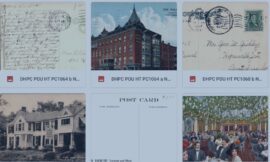
Postcards Workshop
Dutchess County History Community Dutchess County Historical Society Local Vice PresidentsCraig Marshall, Chair Regular Quarterly Meeting: Postcard WorkshopDecember 14, 2022 For best view, full screen, click on Watch on YouTube, otherwise just press the red play button.
Posted in: For everyone
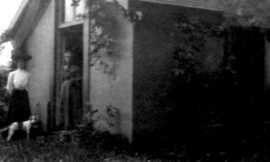
Painting in a Challenging Landscape: Women Artists in the 19th Century
With Rob Doyle This program is part of the exhibition, Fertile Ground: the Hudson Valley Animal Paintings of Caroline Clowes. Below: Click on Watch on YouTube to open a new window & to view full screen. Click on the red play button in the middle to view within the existing window. The generous support of our Program sponsor, Hudson Views, and Virtual Event Space sponsor, N&S Supply, allows us to bring programs such as this to the public at no cost to the viewer. Artist Bios & Additional Information Sara Cole (1805-1857) Frances Fanny Flora Bond Palmer (1812-76) Eliza Pratt Greatorex (1820-97) Lilly Martin Spencer (1822-1902) Rosa Marie (Rosalie) Bonheur (1822-1899) Susan Catherine Waters (1823-1900) Sarah Anne Lillie Hardinge (1824-1913) Ellen Maria Carpenter (1830-1909) Charlotte Buell Coman (1833-1924) Fidelia Bridges (1834 – 1923)Laura Woodward (1834-1926) Julie Hart Beers (1835-1913) Miss Susie M. Barstow (1836-1923) Evelina (Nina) Mount (1837-1920) Mary Josephine Walters (1837-1883) Caroline Morgan Clowes (1838-1904) Virginia Wealthy Chandler (Titcomb) (1838-1912) Maria J.C. A’Becket (1839-1904) Miss Mary Kollock (1840-1911) Agnes C Way (1842 – 1943) Julia Cornelia Widgery Slaughter (1850-1905) Elizabeth Rebecca Coffin (1850-1930) Annie Cornelia Shaw (1852-1887) Bibliography American Women Artists, from Early Indian Times to the Present. Charlotte Streifer Rubinstein. 1982. Art Work, Women Artists and Democracy in Mid-Nineteenth-Century New York. April F. Masten. 2008 Fertile Ground. The Hudson Valley Animal Paintings of Caroline Clowes. Catalog. 2022. DCHSNY.org HOME ON THE HUDSON: Women & Men Painting Landscapes, 1825-1875. Catalog. 2009. Boscobel. Laura Woodward, The Artist Behind The Innovator Who Developed Palm Beach. Deborah C. Pollack. 2009. Nantucket Spirit, The Art & Life of Elizabeth R. Coffin. Margaret M. Booker. 2001. New Path, The. Ruskin and the American Pre-Raphaelites. Linda Ferber/William Gerdts. 1985. Brooklyn Museum Exhibit. Painting Professionals, Women Artists & The Development of Modern American Art, 1870-1930. Kirsten Swinth. 2001. Remember The Ladies, Women of the Hudson River School. Thomas Cole National Site Exhibit Catalog 2010. Restless Enterprise. The Art and Life of Eliza Pratt Greatorex. Katherine Manthorne. 2020. Women Artists, In All Ages And Countries. By Mrs. E. F. Ellet. 2016 Reprint of 1859 book. Women Artists of America, 1707-1964. Exhibition Catalog Newark Museum. April 2 – May 16, 1965
Posted in: For everyone, Women's History

Ongoing.Virtual.Virtual Event Space
An archive of wide-ranging topics from prior presentations and talks.
Two Houses, One Political Divide
Two Rhinebeck Houses Reflect Opposing Political Views in 1860 By Bill Jeffway A study of two houses across the street from each other in Rhinebeck, and the politics of their owners, is a study in the politics of our early republic in the run-up to the Civil War and the split in the north within the Protestant White establishment. Their opposing involvement in the 1860 US Presidential election, and some local actions and words of Abraham Lincoln, offer insight into the divisions in the country, and Lincoln’s “team of rivals” approach to reconciliation. Although in 1860 Ambrose Wager was living north of Rhinebeck Village on Montgomery Street in a house that stands today (see photo), he is best known for his Second Empire house on West Market Street that was constructed in 1874. Slightly younger than Darling, Wager built the monumental West Market Street house at the peak of his life’s achievement, as was the case with Darling when he built his West Market street house in the 1850s. From Era of Good Feelings to Civil War in a Generation Local newspapers in Dutchess County, and around the country in 1817 were describing what they saw as an Era of Good Feelings in the country where political divisions were put aside. The name and concept took hold, and the era is seen by historians as aligned to the Presidency of James Monroe, from 1817 to 1825. But in little more than a generation, between 1861 and 1865, the Civil War caused the deaths of 2% of the US population, the equivalent of 7 million people today. Nathan Darling chose Hudson River Bracketed Style Nathan Darling had built the house that stands today on the north side of Market Street by 1858 in a classic, local style described as Hudson River Bracketed by the local architect of national influence Alexander Jackson Davis. It was a style designed by Davis that could be embraced and executed by the average working class, as well as the elite, and everyone in-between. Although never a political candidate, the 1860 Federal census description of his occupation as “politician” is appropriate given the path he took to become a “wide-awake” leader of the Republican party. Ambrose Wager chose Second Empire Style On the south side of West Market Street stands the home of Ambrose Wager, an imposing Second Empire style home reaching back to Napoleonic France for inspiration built in 1874. Its imposing grandeur and connotations of Empire give it an immovable feeling. Wager’s 1883 obituary describes him as a steadfast and unwavering “Democrat of the old school.” The Democratic Party of that time was associated with a more permissive approach to slavery and its expansion. Wager was the 1860 candidate for Congress for the Democrats. Darling was active in politics all his life. In that transitional period between the era of good feelings and the Civil War, he got involved in a wide array of political movements that splintered and coalesced and splintered and coalesced again. The names of the political movements at the time give us a sense: the Locofoco’s, the Hindoo party, the Barnburners, the Know Nothings, the Free-soilers, the Native American party (referring to European Americans born in this country), the Hard and Soft Democrats. That splintering started to recede as the newly formed Republican Party emerged in 1854, a party with anti-slavery sentiments. By the 1860 Presidential election the Republican party had matured and Lincoln emerged as the party leader. Going further, however, within this movement, there emerged locally and all across the north, the most visible agitators for Lincoln who became known as the Wide-Awakes. The name was meant to reflect the depth of their commitment, and the level of energy they brought to the cause. Given the nimbleness of Darling’s prior political maneuvers, it is not surprising he became the visible leader of that movement in northern Dutchess County. Here is a description of a Rhinebeck parade from the November 3, 1860 Poughkeepsie Daily Eagle, “Grand wide-awake demonstration at Rhinebeck. 1,300 men in line. The Republicans of Rhinebeck had a grand time last evening. The parade of the wide-awakes was far ahead of any political procession ever seen before in this town. The clubs from Poughkeepsie were on hand headed by Flockton cornet band and were honored with the right of the line. The procession formed under command of Captain Darling Grand Marshal. Almost every house in the village was illuminated in the enthusiasm of the spectators and was unbounded as a political demonstration. It was most successful and showed most conclusively that the Rhinebeck Republicans are wide-awake for the cause.” As the Republican candidate, Lincoln won the November 1860 Presidential election without winning any southern state. And while he won all northern states, except New Jersey, you need only look at Dutchess County election results to see the choice was far from a mandate in the North. While Lincoln carried the county overall, he did not carry East Fishkill, Fishkill (Beacon), Hyde Park, LaGrange, Red Hook, or the Town of Poughkeepsie. Lincoln won the electoral college with only 39% of the popular vote. Lincoln inaugural train stops in Rhinebeck This was the divisive backdrop to the inaugural train journey from his home in Springfield, Illinois to Washington DC where he would take the oath of office that included Lincoln, Mrs. Lincoln, their three sons, and Lincoln’s African American servant William Johnson. Lincoln had stopped in Albany overnight and was on the next leg of his trip when he stopped briefly in Rhinebeck. Lincoln is described by viewers as having bowed, but not spoken to the crowd. The New York Times reported that Lincoln picked up at least one person, specifically William Kelly, of Rhinebeck’s Ellerslie Estate. Kelly had just run for, and lost the NY Governorship candidate from in the Democratic Party. This kind of outreach is typical of Lincoln’s “team of rivals” embrace. Ambrose Wager was the (also failed) Democratic candidate for congress in the 1860 election.
Posted in: For everyone, Towns
Dutchess County’s Knickerbocker Trail
For a very long time, since 1809 to be precise, the best-known Knickerbockers have been the fictional characters depicted by the author Washington Irving in a satirical history of New York. His work spawned the use of the iconic name to mean a “real” New Yorker, the Dutch focus reflecting the fact that the first European settlers in New York were Dutch. The popularity of Irving’s work led to the popular depiction of the “Father Knickerbocker ” character, with a three pointed hat and knickerbockers, the pants that go just below the knee and socks take care of the rest. The name lives on popularly today in the basketball team, the New York Knicks, among others. Bryan Knickerbocker lives outside of Philadelphia, and has been studying his family history for decades. DCHS is pleased to be publishing Bryan’s findings in a less traditional way, through the serial publication of chapters that will illuminate points along a trail in northern and central Dutchess County. That evolving trail can be found at www.dchsny.org/knickerbocker-trail. Among the most extraordinary findings, 90% of the Knickerbocker’s in the United States are descendants of these northern Dutchess Knickerbockeers. Subsequent chapters will be told and assigned their place on the Knicerkbocker trail! Bill Jeffway To best view the trail, align your mouse over the trail window (middle) and scroll up and down. To adjust the position of the window, align your mouse to the left or right edges and scroll up or down.
Posted in: For everyone, Towns, Trails

Civil War Highlights
Above: early assembly of men volunteering for service in Poughkeepsie in 1861 when the war commenced. The Civil War is a topic that holds a great deal of interest among many people. Although, with the exception of the battle at Gettysburg, much of the fighting took place in the U.S. south, two percent of the US population died from combat or disease or war-related injuries, that is the equivalent of seven million people today. The Civil War had a profound and lasting impact locally. Men fought in different regiments, but the 150th NY Volunteers was known as the Dutchess County Regiment, and the 128th Regiment has a large composition of county men. Women organized aid societies and served at the battlefied as nurses and aids. Programs: DCHS Trustee, Dr. Michael Boden is an expert on the Civil War and his series of programs supported by CR Properties is popular. Collections: the highlight has to be the draft wheel used in Poughkeepsie in the 1863 draft. The Titus Papers and Dean Thomas Collection highlight the 150th and 128th respectively. Two consecutive DCHS Yearbooks were dedicated to the topic.
Posted in: For everyone, Topics
Black History Featured Collections
Highlights People 1941 VOICES Interviews of Manet Fowler Places AME Zion Church The Walter M. Patrice Collection Things Freedom For Sale Man purchases own freedom Words from the past Newer Perspectives Other Starting Points The Walter M. Patrice Collection focuses largely on the history of the Smith AME Zion Church in Poughkeepsie, which through Mr. Patrice’s efforts was listed on the national historic register. Although unable to part with the photo album, Mr. Patrice allowed DCHS to take photographs and use the images from his mother’s family’s photo album. In most cases, his mother was not able to identify specific individuals (aside from her father, Jasper Jackson) but she confirmed that it is the family album of Henry and Alma Jackson of the Town of Milan. Below right are some striking images by Reuben Van Vlack of men preparing to serve in World War One in 1918.
Posted in: African Heritage, For everyone
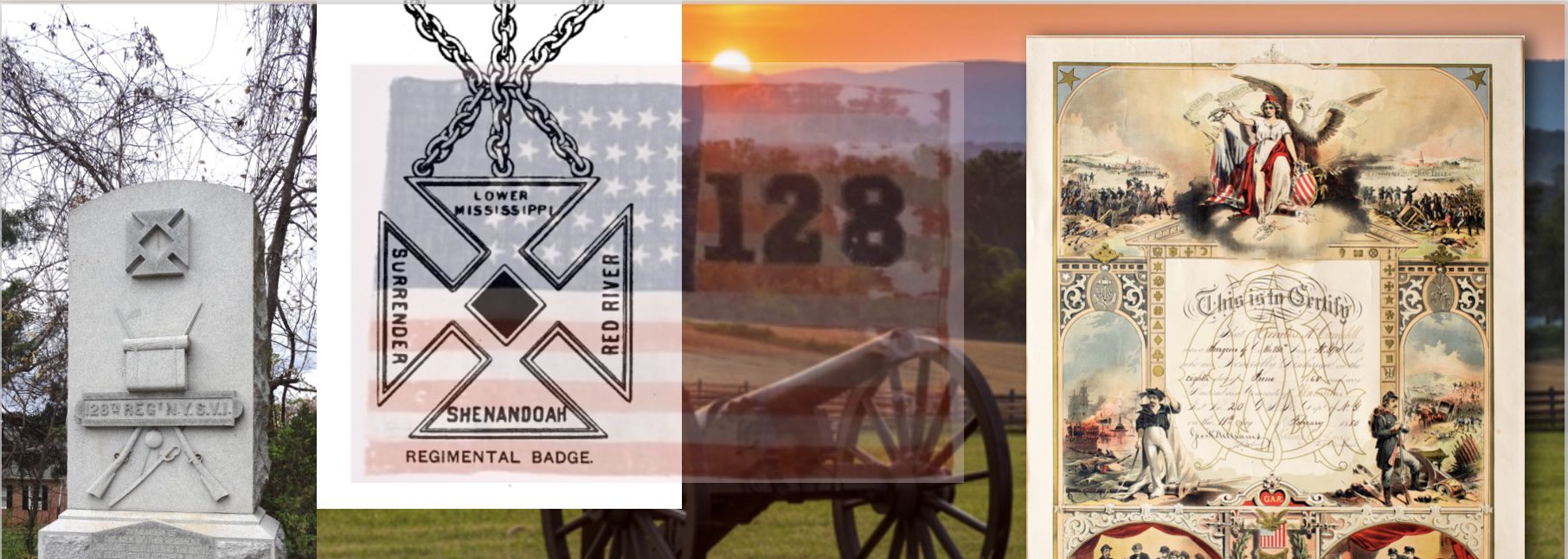
Dutchess County Soldiers in Shenandoah
DCHS Trustee and Dutchess Community College professor Dr. Michael Boden, himself a long-serving veteran is just back from the Shenandoah battlefield. As is his style, he takes moments of national importance and allows us to see and experience them through the eyes of the men, in this case, who would have been our friends and neighbors had we lived in Dutchess County over a century and a half ago. After you click on the video, for best viewing click on the Full screen icon at the bottom right of the video screen.
Posted in: For everyone, Veterans
